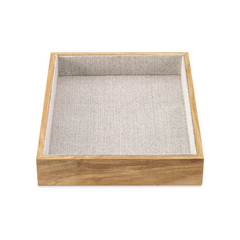We share a lot about how to maximize storage in your home. But the last thing you want is to spend time accommodating things you aren't using. You know the culprits... the items collecting dust that you'll need "one day" or are still waiting on that repair. We're sharing the most common space-wasters we see throughout the home and making a case for why they can go.
The 1 Thing You Don’t Need in Your Home

- Judgment: Freeing your home from judgment begins with accepting yourself right where you are. Your space tells your unique story – it's not a showroom. Remember that when friends stop by, they're here for you, not to critique your home. While good organization can simplify life, keep it in perspective. Your systems should support you, not control you. Be flexible and adjust as needed. The goal? Create a living space that complements your lifestyle and lets you focus on what really counts – the life you're living, not just the space you're living in.
HOME ESSENTIALS
2 Things You Don’t Need in Your Kitchen

- Duplicates: Duplicate kitchen items that aren’t used simultaneously are common space-wasters. We frequently see this with gadgets like pizza cutters, vegetable peelers and ice cream scoops. Unless you’re using duplicates at the same time, we recommend choosing your favorite and donating the rest.
- Bulk: This might be a little controversial but bulk purchases are one of the biggest clutter culprits in the kitchen. From oversized boxes of granola bars to giant containers of protein powder - finding a home for all the excess can be a struggle. We recommend only purchasing in amounts that you have room to store. If you have a large family and buying in bulk is a necessity, remove any excess packaging from bulk purchases to save space. You can also decant baking staples, supplements and breakfast cereal in smaller canisters and store any remaining in a back stock bin out of the way.
KITCHEN ESSENTIALS
3 Things You Don’t Need in Your Entryway

- Excess items: Reduce clutter in your drop zone by setting limits for go-to staples. Depending on available space, that might be 2 pairs of shoes, 1 bag and 1 jacket per member of your household. Anything beyond that should be relocated to individual closets.
- Seasonal items: As the seasons change, make an effort to relocate items not applicable to the current season. That may mean switching bug spray and sunscreen for scarves and beanies in the fall and vice versa in the spring. Relocate out-of-season items to a storage area out of the way to make room for those being frequently accessed.
- Occasional use items: Only go-to belongings that are used at least every few days should be stored in an entryway. Make it a habit to regularly remove any occasional-use items that accidentally make their way into the space - from that random piece of jewelry to the stroller fan.
ENTRYWAY ESSENTIALS
4 Things You Don't Need in Your Closet

- Bulky hangers: Thick wooden or tubular plastic hangers take up a lot of extra room on a closet rod. You can save space by switching to a matching set of slimline Everyday Hangers which allow you to double your available hanging capability.
- Clothes that need mended: If you find yourself storing a pile of clothes inside your closet with torn seams and popped zippers, take this as a sign to finally pull them out and deal with the repairs. Moving forward, take items to the repair shop asap to avoid them piling up.
- Donations: We love a designated "donations" bin and have even been known to create one in the closet just for this purpose. However, we recommend prioritizing essentials, only storing donations in your closet if space allows. If space is limited look to a coat closet, spare cupboard or mudroom to collect items for donation.
- Seasonal items: Costumes, holiday prints, heavy winter coats, and more items that are only worn seasonally should be removed when not in use. Consider utilizing an under-bed or basement bin for shifting the appropriate items in and out of your closet as necessary.
CLOSET ESSENTIALS
Now that you've removed all unnecessary excess, consider adding boundaries with organizing solutions. Then go forth, categorize and contain with the knowledge that your system includes only the items you're actually using.
xx,
the NEAT team

















